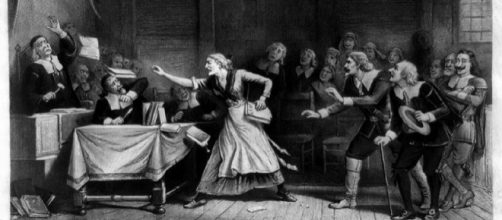Over a horrifying 150-year-span, approximately 80,000 people were accused of witchcraft throughout Europe. Commonly known as the Great witch hunt, it is estimated that over 40,000 women were convicted of witchcraft and executed. Most of the victims were burned at the stake, but then the accusations suddenly stopped.
Did the European people suddenly have a change of heart? Did the witch hunters find and kill every witch in Europe? Economists Peter Leeson and Jacob Russ have a different theory. They argue that this violent portion of history that lasted for over a century was the result of economic competition between the Protestant and Catholic churches for religious market share.
Gaining and retaining followers
From 900 until 1400, Christian officials refused to even acknowledge the existence of witches. To be accused of witchcraft, tried, and executed was entirely unheard of until the 1500's. In fact, a canon was issued by Pope Alexander IV in 1258 to prevent the prosecution of so-called witches. Then, suddenly everything changed.
Witch hunts began to occur after the Reformation of Christianity in 1517. Protestantism began to spread throughout Europe, making it more difficult for the Catholic church to retain its followers. According to Leeson and Russ, both the Catholic and Protestant churches used the local belief in witchcraft as leverage. They vowed to protect their followers from such evil things, if the people remained loyal to the church.
Analyzing the data
After reviewing historical facts and data from more than 40,000 witchcraft convictions in 21 countries across Europe, Leeson and Russ found that witch hunts intensified in places where Protestant-Catholic rivalries were the strongest. This can be seen in Germany, ground zero for the Reformation of the church. Over 40% of all witchcraft convictions occurred in Germany from 1550 until 1700.
The second highest number of witch hunts happened in Scotland. Different sects of Protestantism were competing with each other, which led to 3,563 women being tried for witchcraft. Countries that remained primarily Catholic during the Reformation collectively saw 6% of women tried for witchcraft.
These countries included Spain, Portugal, Ireland, and Italy.
According to Leeson and Russ, over 40,000 women were violently murdered because of competition between the churches for followers. After the Reformation calmed down in the 1700's, these witch hunts died off in Europe. However, individual witch hunts still occur in other parts of the world such as India and countries in Africa to this day.


